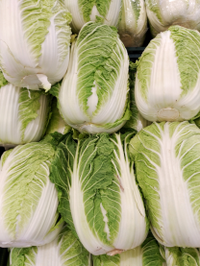
Photo from wikipedia
Abstract Clubroot caused by Plasmodiophora brassicae Woron is one of the most destructive diseases of Chinese cabbage (Brassica napus). A highly potent strain of Bacillus subtilis, XF-1, which was isolated… Click to show full abstract
Abstract Clubroot caused by Plasmodiophora brassicae Woron is one of the most destructive diseases of Chinese cabbage (Brassica napus). A highly potent strain of Bacillus subtilis, XF-1, which was isolated from the rhizosphere of Chinese cabbages with severe clubroot in Guandu District of Kunming, Yunnan Province, China, had strong inhibitory effects on both the survival and germination of resting spores of P. brassicae. Several strategies were evaluated to efficiently manage clubroot in Chinese cabbage, and different mechanisms were investigated. The ability of Chinese cabbage root hairs to reduce infection by P. brassicae in the growth and efficiency of colonization of XF-1 on seedling roots was also studied. Responses to the suppression of clubroot increased with increased seedling age in pot and field conditions, and the rate of noninfectious root hair was enhanced by the inoculation of pathogens, suggesting that seedling age impacts the infection by P. brassicae. The application of B. subtilis XF-1 liquid culture for treatment during the developmental stages of infected Chinese cabbage seedlings gradually decreased the control effect. Moreover, soaking seeds with B. subtilis XF-1 culture reduced clubroot disease incidence rate and disease incidence by 40% and 69%, respectively. These results indicate that prevention and treatment by B. subtilis XF-1 at an early stage is the best way to reduce the damage caused by clubroot disease.
Journal Title: Biological Control
Year Published: 2019
Link to full text (if available)
Share on Social Media: Sign Up to like & get
recommendations!